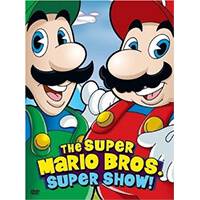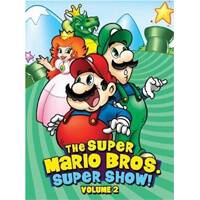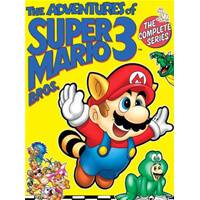Retro Ranting – The Super Mario Bros. Super Show
As part of a new series of features, irascible Skwigly curmudgeon Ben Mitchell takes a look back at the shows that shaped him into the emotionally-balanced adult he is today. First on the chopping block is DiC’s adaption of the world’s most popular games franchise…
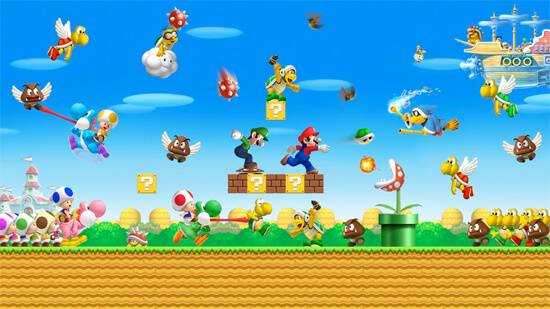
Mere moments before the HMV empire began crumbling to dust, I found myself idly twiddling with one of their in-store 3D GameBoy demos (DS, schmee-S – if it’s a Nintendo you hold, it’s a goddamn GameBoy). The game loaded up was New Super Mario Bros 2, which, like all Mario games, is the most fun a kid can have playing with a middle-aged mustachioed man without requiring therapy in their adulthood. The appeal of these games isn’t that hard to dissect, being fundamentally the same going back to those blocky NES years that were already dated by the early 90s childhood of an old piece of sh*t like me. While the majority of Mario titles that have been churned out over the last 30 years have maintained an inherent, addictive playability throughout, we as kids would occasionally get shafted with bizarre crossover games and, unforgivably, educational titles where it would gradually dawn on our poor brains that a game we were assured was a Mario-centric time-travel escapade was in fact a thinly-veiled attempt to teach us history. Really all it taught us was the concept of betrayal, which I suppose is just as important.
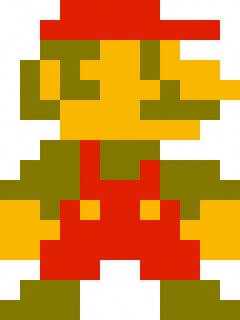 Strangely, some of these not-quite-Mario games work in their own right. To this day old Gameboy chestnuts such as Dr. Mario and Mario Golf can keep me occupied for all but the most troublesome of bowel movements. Naturally though, Mario works best when he’s going down pipes, flying about the place and stomping turtles, all to serve his deep-rooted messiah complex/fixation toward a dippy princess who, once rescued for the billionth time, gives him a peck on the cheek for his troubles. Then presumably hooks up with her tall, thin boyfriend who she conveniently chose to not bring up until the final lizard monster was slain. In that respect, Mario’s a terrible role model for the youth – he’s the face of every poor schmuck trapped in the ‘friend zone’. Here’s a free power up in the form of some advice, mate – neediness is a turn-off.
Strangely, some of these not-quite-Mario games work in their own right. To this day old Gameboy chestnuts such as Dr. Mario and Mario Golf can keep me occupied for all but the most troublesome of bowel movements. Naturally though, Mario works best when he’s going down pipes, flying about the place and stomping turtles, all to serve his deep-rooted messiah complex/fixation toward a dippy princess who, once rescued for the billionth time, gives him a peck on the cheek for his troubles. Then presumably hooks up with her tall, thin boyfriend who she conveniently chose to not bring up until the final lizard monster was slain. In that respect, Mario’s a terrible role model for the youth – he’s the face of every poor schmuck trapped in the ‘friend zone’. Here’s a free power up in the form of some advice, mate – neediness is a turn-off.
While the established Mario universe and current state of video game graphics make it not too hard to envision a Mario movie or TV show, back when I was a youngster it was all a lot more vague (“Are Toadstool, Peach and Daisy all meant to be the same princess? Who cares! We’re eight!”). Any attempts to put on screen a non-playable narrative Mario adventure were, to the best of my knowledge, firmly demolished by Super Mario Bros. The Movie, a not-quite-anything headf*ck where Mario is Eddie Valiant and King Koopa is a less-rapey, PG-13 Frank Booth. My take on this film is of the ambivalent nostalgia variety; I adore it, yet acknowledge it could be the worst film ever made. Although I’d maintain that Bob Hoskins was a perfect live-action Mario, albeit in much the same way John Goodman was a perfect live-action Fred Flintstone – it doesn’t matter when the movies crafted around them make no effort whatsoever.
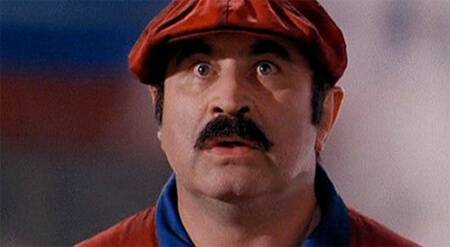
The look of a man who just realised what film he’s in
Similarly, the larger-than-life wrestler Captain Lou Albano seemed a pretty close fit in the preceding, more successful TV series The Super Mario Bros. Super Show that began in 1989. Both performers nailed a quality of Mario we all just assumed but evaporated the moment he began to speak in the video games – I’m sorry, but Charles Martinet’s cartooney, effete Sicilian whine never did it for me. As far as I’m concerned, Mario’s an Italian in the Tony Soprano sense. Brooklyn, born and raised, knows the best place to get a calzone, good guy to know but get on his bad side and, oof, Madonn’, you wind up with a wrench in the teeth. The kind of Mario who gets the princess in the end, or at the very least gets a crack at her less-photogenic friend when the bar closes. When I compare that image of the man to today’s “Let’s-ah go!” nonsense I get acid reflux.
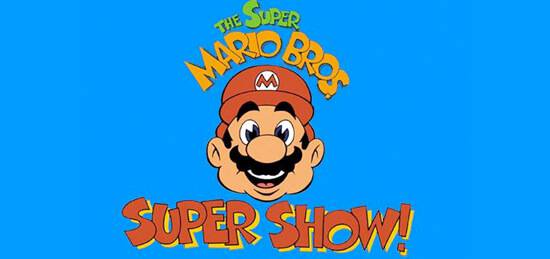
This needlessly labored, meandering lead-in could very well run away from me further, so I’ll knock it on the head now and get on with the point of the piece, that being the series itself. It’s a peculiar beast, somewhat shambolic but in a far more forgivable sense than the eventual movie. Each show is comprised of two stories, an animated episode bookended by live-action segments. More on those later.
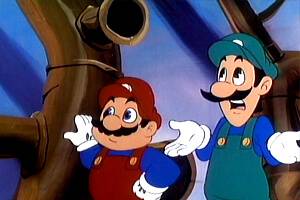 The cartoon portions are probably the stronger – they aren’t side-splittingly funny, nor are they especially horrendous. In fact, they’re so atypically conceived that it’s kind of hard to categorise them. The binding premise is a sort of fusion of the original NES game combined with the non-Japanese version of Super Mario Bros 2 (y’know, the one where you throw vegetables at everything), the main quality of the latter having the four leads be Mario, Luigi (his brother), Toad (the indeterminate mushroom thing) and the princess, who largely manages to abstain from getting herself kidnapped. Peripheral characters largely draw on game villains from both, the main antihero being King Koopa (Bowser in the games). So with an ensemble in place, how does one adapt a video game that essentially boils down to jumping on things, climbing vines and snuffling down ‘shrooms to episodic storytelling?
The cartoon portions are probably the stronger – they aren’t side-splittingly funny, nor are they especially horrendous. In fact, they’re so atypically conceived that it’s kind of hard to categorise them. The binding premise is a sort of fusion of the original NES game combined with the non-Japanese version of Super Mario Bros 2 (y’know, the one where you throw vegetables at everything), the main quality of the latter having the four leads be Mario, Luigi (his brother), Toad (the indeterminate mushroom thing) and the princess, who largely manages to abstain from getting herself kidnapped. Peripheral characters largely draw on game villains from both, the main antihero being King Koopa (Bowser in the games). So with an ensemble in place, how does one adapt a video game that essentially boils down to jumping on things, climbing vines and snuffling down ‘shrooms to episodic storytelling?
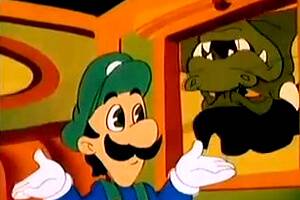 The answer: You acknowledge it’s impossible and don’t bother. Instead the main thrust of each episode relies on parodying existing movies, TV shows and fables. While this seems lazy written down, it’s worth noting that this show came well before the common practice of doing so that The Simpsons, The Critic, South Park, Family Guy et al made so prevalent. What you wind up with is a largely watchable collection of silly mini-adventures whose worst crime is occasionally succumbing to tedium. “Oh, okay. Mario’s Crocodile Dundee in this one. Righty-ho.”
The answer: You acknowledge it’s impossible and don’t bother. Instead the main thrust of each episode relies on parodying existing movies, TV shows and fables. While this seems lazy written down, it’s worth noting that this show came well before the common practice of doing so that The Simpsons, The Critic, South Park, Family Guy et al made so prevalent. What you wind up with is a largely watchable collection of silly mini-adventures whose worst crime is occasionally succumbing to tedium. “Oh, okay. Mario’s Crocodile Dundee in this one. Righty-ho.”
The live-action segments operate on an entirely different wavelength – they are utterly goddamn baffling, seeing Mario and Luigi (played by their cartoon voiceover actors, the aforementioned Albano and Danny Wells respectively) in what may or may not be their ‘retirement’ years, with no reference to the video game adventures. Instead they embark on surreal, variety-show type skits, interactions with Young Ones-style puppets and ushering in guest stars who are forced, glassy-eyed, to yell “DO THE MARIO!” at the end of each episode as though facing a firing squad. The cherry on top is a laugh track that rears its head at completely random moments, cultivating a vaguely sinister atmosphere not a million miles away from David Lynch’s Rabbits.
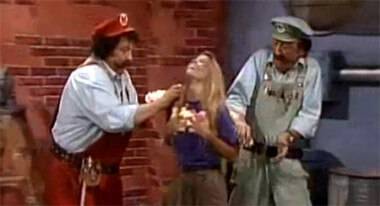
“Why, Nicole?”
In truth I have far greater respect for the guests who sportingly get into the lunacy of it all, though there are moments where you feel like a kid who walked downstairs to find your parents doing something you weren’t supposed to see. The first episode, for example, begins with special guest Nicole Eggert (I don’t know either) suffering mishap after mishap and winding up looking a stained, disheveled mess for the party she’s en-route to. The resolution, it turns out, is that it’s a “Sloppy party” and the worse she looks, the better! Hurrah! Naturally, the episode ends with Mario and Luigi smearing food all over her to prepare her further while she writhes in gleeful ecstasy.
Much as that sounds like the insane ramblings of a waterboarding victim, I swear it’s exactly what happens. It’s ON the DVD.
“Mum, what’s a ‘sloppy party’?”
“Go to your room, Ben.”
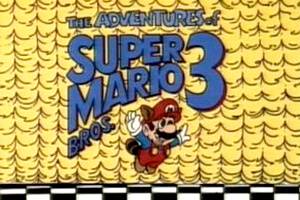 This is the largely-unchanging format of volumes 1 and 2. Then follows a significant reworking of the show, changing the title to The Adventures of Super Mario Bros 3 and basing the premise entirely on that game and its characters. From this point on each episode consists of two animated stories, eliminating the live-action segments and, with them, Albano and Wells. I’m not sure who replaces them but Mario starts to sound vaguely like Vic Mackey from The Shield. I start to feel anxious that he’ll bring up horrendously inappropriate comparisons to sweet butter.
This is the largely-unchanging format of volumes 1 and 2. Then follows a significant reworking of the show, changing the title to The Adventures of Super Mario Bros 3 and basing the premise entirely on that game and its characters. From this point on each episode consists of two animated stories, eliminating the live-action segments and, with them, Albano and Wells. I’m not sure who replaces them but Mario starts to sound vaguely like Vic Mackey from The Shield. I start to feel anxious that he’ll bring up horrendously inappropriate comparisons to sweet butter.
This version of the show has a lot less charm, which is unfortunate as the game on which it’s based is a landmark in videogame history. At this point there is more of a concerted effort to derive the stories and the action from specific elements of the game, glued together with terrible dialogue I recall cringing at even in my youth and musical numbers that make my teeth itch. Though the presences of Tara Strong and Harvey Atkin are welcome, the remaining voice cast have pretty much been directed to be as shrill and obnoxious as possible. I’m too old for that now, I can’t deal.
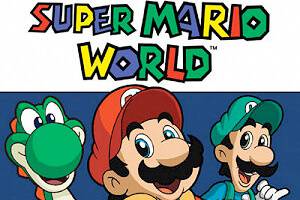 There was a further development of the show, this time based on the first SNES offering Super Mario World paired up with another Nintendo-based series Captain N, but my memories of this venture haven’t seen me rush out to track down the set. What I mainly recall is how the addition of Yoshi, while a boon to the games, was an utter death-knell to the series.
There was a further development of the show, this time based on the first SNES offering Super Mario World paired up with another Nintendo-based series Captain N, but my memories of this venture haven’t seen me rush out to track down the set. What I mainly recall is how the addition of Yoshi, while a boon to the games, was an utter death-knell to the series.
While there’s little-to-nil point in critiquing a show that was probably developed to boost sales of games whose sales didn’t need boosting in the first place, I’m somewhat fascinated from a development perspective. The most intriguing inclusions in these sets are the series bibles that do a far better job of laying out the show and its intent than the end product actually achieves.
I’ll probably always be a Mario fan, squeaky-voice or no. The strangely hypnotic repetition of it, the puzzles that are easy to solve but make one feel smart anyway, the satisfying squelch of a Goomba underfoot – they all put me in a good place. It would just be nice if they made a game where the princess throws the poor bastard a mercy one – think of the children, for chrissakes. At least the Bob Hoskins Mario had himself a nice Brooklyn cumare who was more in his league. But then, he didn’t have the awesome dance moves of Captain Lou. On a closing note, everyone see if you can keep up with this iconic demonstration of “The Mario”. The “take one step” part is easy, but the “then again” bit may throw ya:
The Super Mario Bros. Super Show Volumes 1 & 2 and The Adventures of Super Mario Bros. 3 are available on DVD in the US through Shout! Factory
Items mentioned in this article:
